The hobbits are back! After two chapters utterly devoid of cheerful hobbit pluck, Merry and Pippin make their triumphant return, being about as cheerful and plucky as you could possibly expect from people who have been kidnapped and tortured by orcs. “The Uruk-Hai” is a harsh chapter. Tolkien fills it with squabbling orc factions, decapitations, and the temerity to make Pippin sad and give Merry a head wound. But despite this rather dour base, “The Uruk-Hai” always injects bit of light along the way, and is a treasure-trove of hints and implications of what’s to come.
Backtracking
Tolkien moves into tricky territory in “The Uruk-Hai.” It’s the first chapter to deal directly with the fragmenting storylines set in play during “The Breaking of the Fellowship” and is consequently an important test of the book’s ability to balance. After spending two chapters with Aragorn’s micro-fellowship we backtrack, rewinding back through the narrative to account for what Merry and Pippin have been up to since they ran off into the woods near Amon Hen.
This could easily have gone poorly. Backtracking so close to the start of a story could easily have stalled the narrative or killed momentum. (Does anyone remember that infamous episode of Lost? No, no that one, that one). Tolkien, in my opinion, largely avoids this trap through a few clever steps. First is the simple fact that we have no idea if Merry and Pippin are going to survive. I’m not sure anyone really expects Tolkien to abruptly off Merry and Pippin—it’s really not his style—but the simple ambiguity of their fate injects some immediate tension.
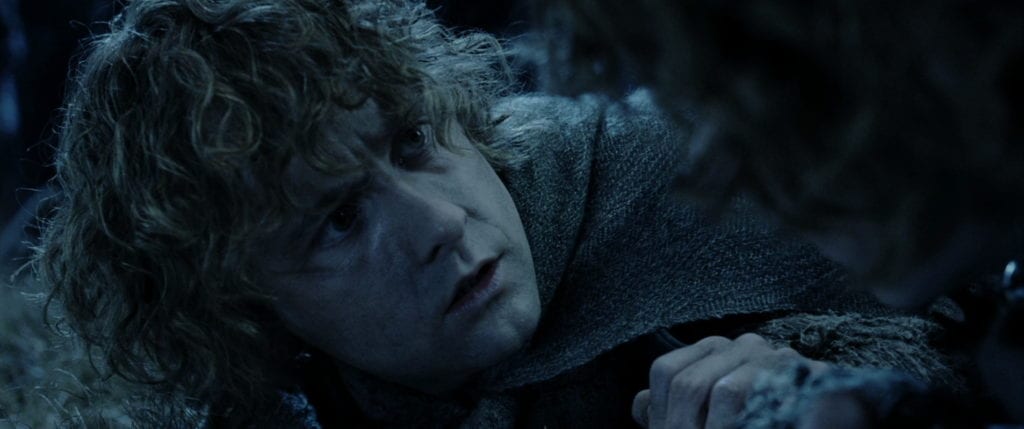
It’s also a chapter with a very strong, unique voice. Outside of a very brief moment in “A Journey in the Dark,” this is the first time we get Pippin’s point of view. And Pippin is delightful. But Pippin also has no earthly idea of what is going on, and his limited perspective on events gives the whole chapter a fresh spin. When the Riders of Rohan show up, it should be an unquestionably triumphant moment. We met them with Aragorn & Co. last chapter, and Éomer proved himself to be a real stand-up guy. It should be a relief. But when Pippin sees them approaching, he’s lackluster. He has no idea who these people are, they’re shooting arrows at him, and he assumes that the Riders will simply kill him and Merry when the fighting begins. Here’s how Pippin perceives them:
“All around the knoll on which the Orcs were gathered little watch-fires sprang up, golden-red in the darkness, a complete ring of them. They were within a long-bowshot, but the riders did not show themselves against the light, and the Orcs wasted many arrows shooting at the fires, until Uglúk stopped them. The riders made no sound. Later in the night when the moon came out of the mist, then occasionally they could be seen, shadowy shapes that glinted now and again in the white light, as they moved in ceaseless patrol.”
By using Pippin’s viewpoint to give such a detached, distant portrayal of characters we already know, the chapter retains a sense of freshness. We already know that all of this happened, but we don’t know how Pippin experienced it.
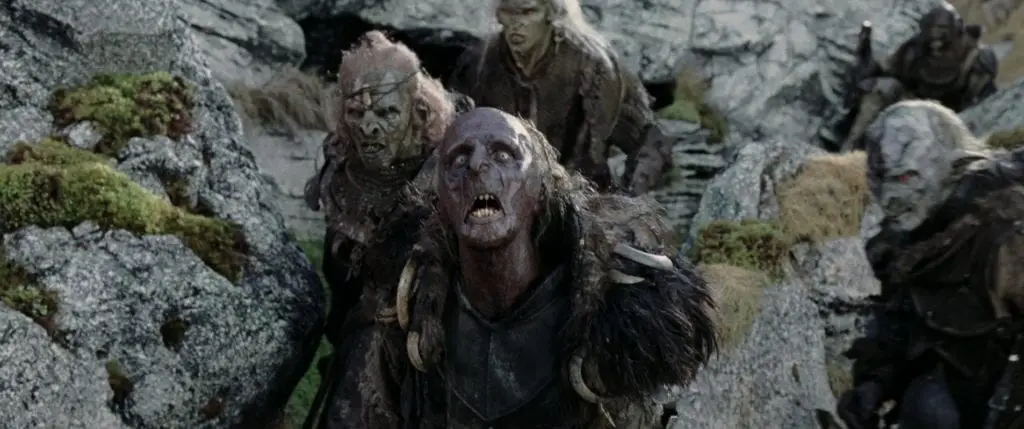
Orcs
And then, of course, there’s the orcs. Pippin is our viewpoint character, but the titular orcs are really the ones who take center-stage.
Orcs in their previous appearances were nameless, faceless antagonists. They were the warm-up act before the Balrog, they were the sowers of chaos near the edge of Rauros. In “The Uruk-Hai” they are characters. Petty, violent, and unpleasant ones, but still characters. It’s an almost-funny way to introduce the tensions between Isengard and Moria, Saruman and Sauron – through a bunch of squabbling middle managers, fighting over jurisdiction like a bunch of small-town cops who see the FBI pull up to their crime scene.
Merry and Pippin wake up to three different orc factions fighting over them. Uglúk and the Uruk-Hai plan on taking the hobbits to Isengard (sorry). Grishnákh wants to take them back to Lugbúrz, the lyrical Orc name for Barad-dûr. And the orcs from Moria simply want to murder them and get out of damn sunlight.
There are implications of all kinds of tenuous alliances and long-seated dislikes. Grishnákh gets enraged whenever Saruman is mentioned. Uglúk, knowing he’s the physically strongest, is fed up with doing the “dirty work” of Sauron’s orcs. Disputes are settled by chopping off heads. It’s almost startlingly different from how “evil” has been so-far portrayed in Tolkien. Rather than the far-off Sauron or the intimate and internal corruption of the Ring, we have a much more visceral and mundane cruelty.
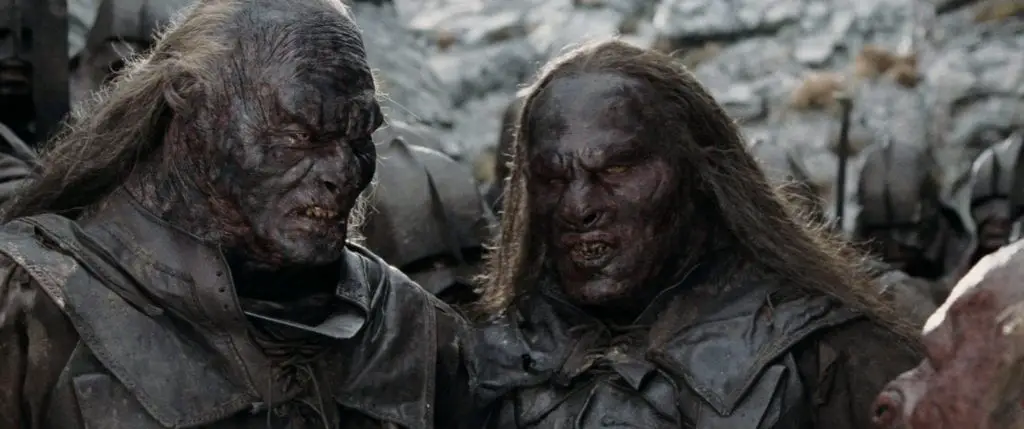
This could very easily be boring. At this point it’s hard to find anything more generic in fantasy literature than mean, ugly orcs. But given Tolkien’s worldview, there’s an extra layer of interest. Tolkien’s orcs are essentially permutations or perversions. Though the origin of orcs remains messy and unclear—Tolkien tossed out like eight different ideas at different times—the thread that ties them together is the idea that orcs had to be perverted from something else. Sauron, and Melkor before him, were never capable of creating life. Orcs were simply creatures that had been corrupted from men, elves, or beasts. They evolved into creatures speaking a language that was comparably cobbled-together and distorted.
In this light, the debate over whether they should go to Isengard or Mordor (or just murder the hobbits on the spot) is more than just a petty squabble. It also works as a distorted mirror-image of the debate held by Legolas, Gimli, and Aragorn. Uglúk is a kind of mirror-Aragorn: he’s the leader of the company but instead of thoughtful and cooperative he is stubborn and violent, chopping off the heads of those who disagree. There is a constant connection to “evil” in Tolkien, and unlike many other fantasy epics, it is never entirely Other.
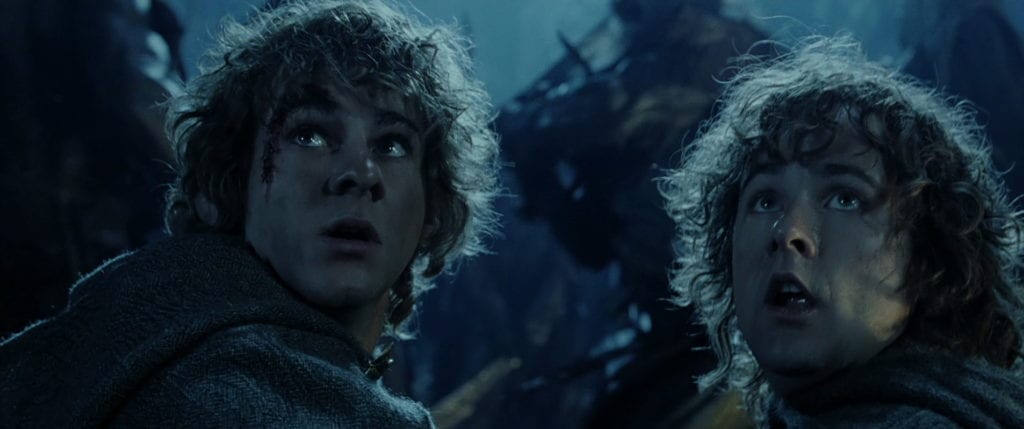
Merry and Pippin
Despite all of this, a chapter chock full of orcs could get rather unpleasant rather quickly. Luckily, we have a counterbalance from Merry and Pippin here, who manage to be so delightful despite their circumstances. I didn’t realize how much I would miss the hobbits. They were gone for only two chapters but something feels missing when they aren’t around.
It’s an especially good chapter for Pippin, who goes through a character arc in only a few pages. He’s understandably down on himself at the start:
“I wish Gandalf had never persuaded Elrond to let us come,” he thought. “What good have I been? Just a nuisance: a passenger, a piece of luggage for the Orcs. I hope Strider or someone will come and claim us! But ought I hope for it? Won’t that throw out all the plans?”
This attitude breaks my heart a little. Not only does Pippin regret being captured, but he manages to make himself feel guilty for hoping to be rescued. Grade-A guilt complex, Pip.
Despite this, both Merry and Pippin prove themselves competent and resourceful over the course of the chapter. Despite viewing himself as a piece of luggage without agency, Pippin manages to secretly free his hands without alerting his captors and to leave behind a clue for Aragorn & Co. to find. Merry – who hacked off the arms of a bunch of orcs in before his capture – pulls out his geography knowledge from his map sessions in Rivendell to help the escaped hobbits figure out where they are and where they need to go.
Maybe the most resourceful aspect of all, though, is hobbit resilience. Merry and Pippin went through a truly terrible ordeal and remain in a situation that’s still rife with danger. But this is how they react:
“As they walked they compared notes, talking lightly in hobbit-fashion of the things that had happened since their capture. No listener would have guessed from their words that they had suffered cruelly, and been in dire peril, going without hope towards torment and death; or that even now, as they knew well, they had little chance of ever finding friend or safety again.”
How hobbity.
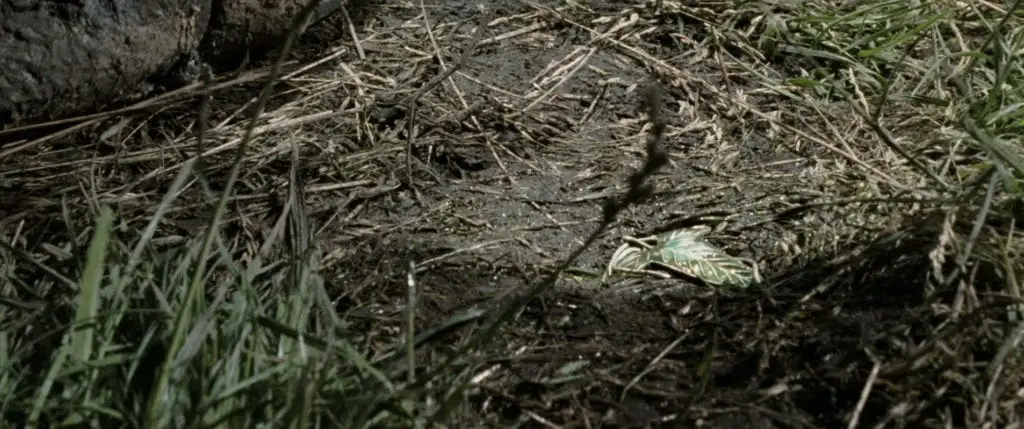
Final Comments
- An update on Tolkien and race: his orcs, no matter how you slice it, are a bit racist. I don’t think they’re as racist as Peter Jackson orcs, but Tolkien’s orcs are still a problematic part of his work. As I mentioned above, Tolkien’s orcs are founded on their perversion from existing species (since Sauron and his predecessors could corrupt, but never create). Given the fact that orcs are at various points described as “sallow,” “black,” and “slant-eyed,” this results in some obviously unfortunate implications. I don’t think Tolkien was intentionally racist—I believe he is on record as speaking out against racism during his lifetime—but it’s hard to deny the fact that his work sets up a correlation between evil and non-whiteness. More on this later, especially when we get to sections on the various human groups who have joined with Sauron.
- “Every now and again there came into his mind unbidden a vision of the keen face of Strider bending over a dark trail and running, running behind.” I’m not quite sure what to make of this bit of foresight on the part of Pippin.
- Grishnákh threatens Merry and Pippin with the terror of “The Questioner” in Mordor. Is this a euphemism for Sauron, or is it one of his lieutenants (perhaps one of the Nine)?
- There are so many fun little things to speculate about in this chapter. How high up is Grishnákh on the Mordor chain of command? Does he really know a Nazgul across the river, or is he bluffing? Is there already a Romeo-and-Juliet equivalent love story between an Uruk-hai and one of Sauron’s minions?
- Prose Prize: “He led the way in under the huge branches of the tree. Old beyond guessing, they seemed. Great trailing beards of lichen hung from them, blowing and swaying in the breeze. Out of the shadows the hobbits peeped, gazing back down the slope: little furtive figures that in the dim light looked like elf-children in the deeps of time peering out of the Wild Wood in wonder at their first Dawn.” I’m excited to see Fangorn next week. It was tough to find artwork of this week’s chapter that wasn’t just sketches of PJ’s Uruk-hai, but I don’t anticipate running into any similar problems for “Treebeard.”
- Éowyn countdown: three chapters.

